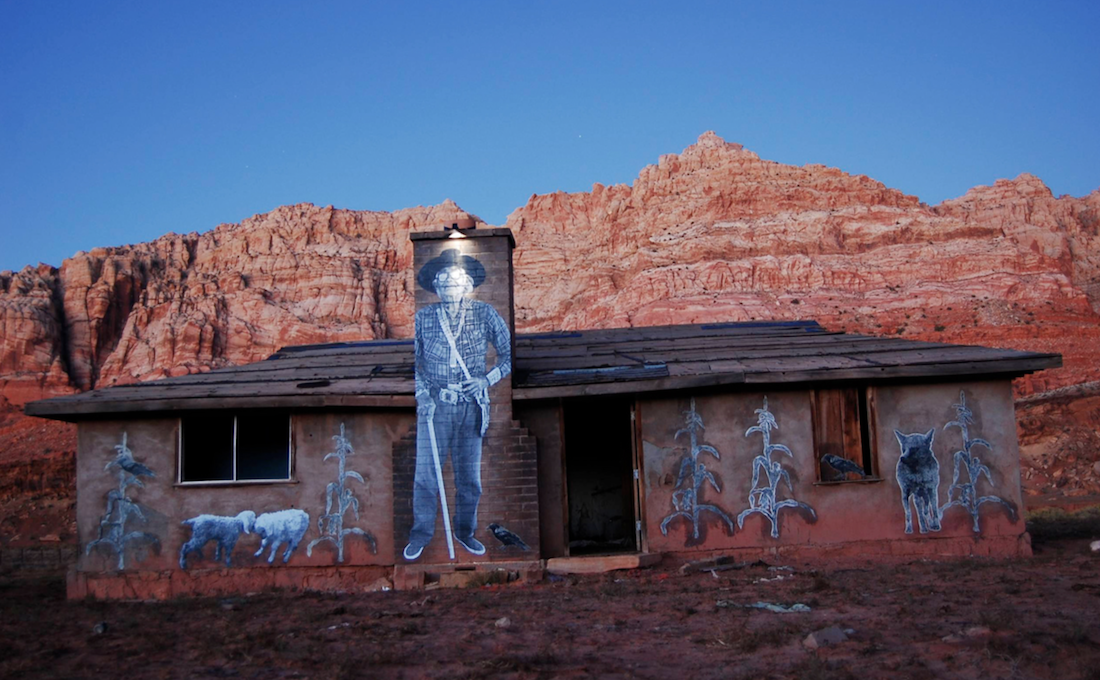Artwork in the desert went viral final fall with the debut of a bewitching spear of reflective steel in southern Utah. The so-referred to as monolith, placed in a cleavage of crimson rock miles from the closest road by an mysterious maker, created intercontinental headlines and grew to become ubiquitous on Instagram. Hundreds of guests descended on the website, putting up pictures of them selves leaning jocularly against the monolith’s sheer sides or providing a obscure tribute to St. Simeon by perching atop its 10-foot summit.
The monolith fad was hardly the very first time that social media end users have obsessed around a sculpture in the desert. The present golden age of this design of artwork-earning started in earnest in 2017, many thanks to a homestead of mirrors in the foothills of California’s San Jacinto Mountains. The sculpture, Doug Aitken’s Mirage, took the kind of a modest ranch home wrought entirely of reflective glass and located amid tawny granite boulders. Mirage was the headliner to the inaugural version of Desert X, a biennial exhibit of installations in the Coachella Valley, and it managed to entice 200,000 people — and their iPhones — to sites during the Mojave. The artwork’s recognition arrived from its clarity of type and the accessibility of its thought: to reimagine a seemingly inhospitable landscape by reframing it in a novel way.
When Desert X returned two yrs later on, artworks that contrasted starkly with their environs proliferated once again. Sterling Ruby’s Specter, a amazing orange box the dimension of a transport container plopped on an expanse of filth, was the viral breakout. Photos of Specter swiftly became just as pervasive on Instagram as people of Mirage, even turning into clumsy inspirational memes, like one particular that examine, “Maybe it is since you do not suit that would make you so uncomplicated to really like.”
Most of the entries at Desert X run according to the identical principle as the Utah monolith: Insert a construction of steel, plastic or glass into the desert to generate a distinction that could possibly in any other case only be achievable as a result of Photoshop. At greatest, they browse as zhoozhed-up variations of the spare, concrete packing containers Donald Judd first planted in the yellowed grass of West Texas in 1980, sculptures which helped turn Marfa into #marfa.The 2021 Desert X exhibition, now established to open on March 12 following coronavirus-linked delays, will undoubtedly observe a identical blueprint. Artwork this unambiguous makes for a neat composition on a smartphone, but it usually fails to evoke emotion past superficial ponder. It will take the Southwest’s deserts as alien geography, created legible only the moment an outsider has intervened. This sort of an tactic refuses a further reckoning with the desert’s ecology or the millennia of human background that have unspooled there.

Doug Aitken’s ‘Mirage.’ Photograph: CC
Artwork in the desert does not have to address its open spaces as a vacant background. Take into consideration Nora Naranjo Morse’s Numbe Whageh, its name drawn from a Tewa phrase that around translates to “center put.” (Naranjo Morse is a member of the Santa Clara Pueblo in New Mexico.) Completed in 2004, the get the job done of land artwork resides in Albuquerque’s Outdated City. From afar, the piece seems like a little hill dotted with chamisa and mountain mahogany. The path that spirals into the artwork, though, traces a descent of shocking depth — on a blazing summertime working day, the experience of reprieve that walking it grants is reminiscent of getting engulfed by shade trees. At the stop of the path is concealed a tiny spring so properly insulated from the sounds of the bordering streets that its burble becomes audible.
Using a photo of Numbe Whageh is unattainable it operates by generating the viewer experience the arid landscape somewhat than only seem at it. The Painted Desert Challenge, an ongoing avenue art exhibition on the Navajo Nation, has a very similar result. Due to the fact the project’s inception in 2009, curator Chip Thomas (an artist and medical doctor also regarded as Jetsonorama, who life on the reservation) and his collaborators have reworked vacant structures into arresting, larger-than-lifestyle portraits and plastered road indicators with statements on the influence of extractive industries. While each individual entry is photogenic on its individual, The Painted Desert Challenge is very best understood as a one artwork: The wall-sized faces and vivid, yellow warnings about uranium air pollution accrue, readjusting a passerby’s comprehension of the area.
The confrontational aesthetic epitomized by the Utah monolith is possible wherever without a doubt, Aitken’s Mirage has turned into anything of a road demonstrate around the previous four decades, appearing in a Detroit warehouse and a meadow in the Swiss Alps. (Desert X alone has expanded a lot more controversially, bringing the biennial to Saudi Arabia previous yr the clearly show drew worldwide condemnation, specified the Saudi government’s human rights abuses.) Meanwhile, Naranjo Morse’s work stokes a perception of the desert as an intricately well balanced ecosystem, whose rhythms are detectable even at a city’s bustling middle, when The Painted Desert Job forces acknowledgment of the problems and triumphs people could usually ignore. Alternatively than social media all set-mades, both pieces have interaction with the reality of a desert fairly than a cartoon of it. The final result? Creations whose ideas remain rooted in location, indomitable as the earth alone.
Major image: An installment of the The Painted Desert Job in Bitter Springs, Arizona, created by Jetsonorama in 2009. Courtesy Jetsonorama.
This submit initially appeared at High Region Information and is republished listed here with authorization.
